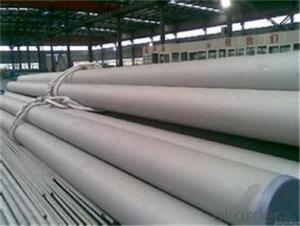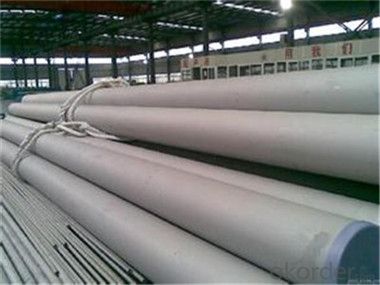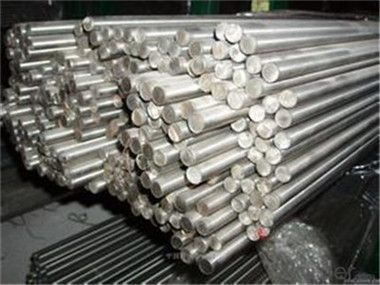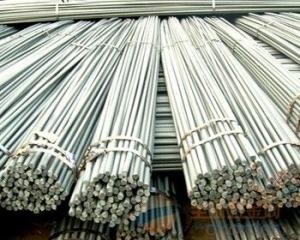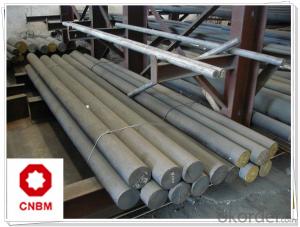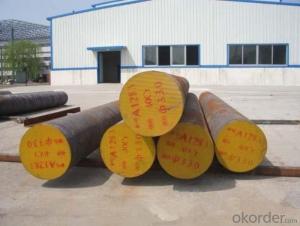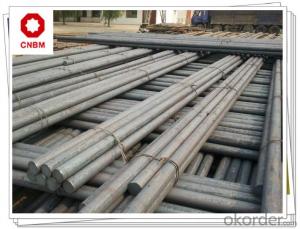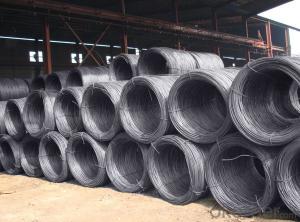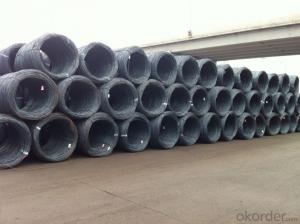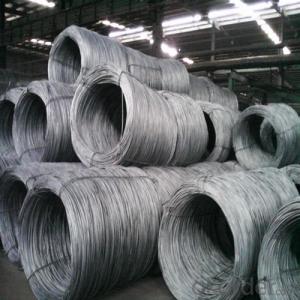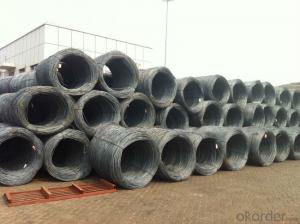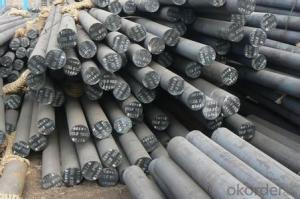Steel Rolled Bars SAE1008 with High Quality Cheaperin China
- Loading Port:
- Tianjin
- Payment Terms:
- TT OR LC
- Min Order Qty:
- 221 m.t.
- Supply Capability:
- 20000333 m.t./month
OKorder Service Pledge
OKorder Financial Service
You Might Also Like
Specification
Description of steel round bar:
Mild steel is sometimes referred to as carbon steel or plain steel. Typically, it is stiff and strong. Carbon steelsdo rust easily, but they can be easily painted or primed. They are cheap so they are the normal choice for most fabrications. Mild Steel can be easily cut or drilled to meet your requests.It is used in the manufacture of a higher strength and higher quenching and tempering section of the 35CrMo steel, like big locomotive traction gears, supercharger drive gear, rear axle, the connecting rod and the spring load greatly clip.
Festures of steel round bar:
1.Dia 80-800mm Length:2000-13000mm or as required
2.Technique:Forged
3.Delivery Time:45 days
Quality High Carbon Steel Round Bar
Garde:20CrMo30 CrMo 35CrMo 42CrMo
Dia:18-230mm
Standard GB,JIS,ASTM,DIN,AISI,BS
Specifications of steel round bar:
Grade | Chemical Contents % | ||||
C | Si | Mn | P | S | |
45 | 0.42~0.50 | 0.17~0.37 | 0.50~0.80 | ≤0.035 | ≤0.035 |
50 | 0.47~0.55 | 0.17~0.37 | 0.50~0.80 | ≤0.035 | ≤0.035 |
55 | 0.52~0.60 | 0.17~0.37 | 0.50~0.80 | ≤0.035 | |
Images of steel round bar:
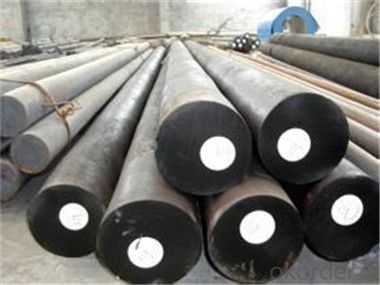
FAQ:
1. What is your package?
Packing situation: standard seaworthy packing or as customer required.
2. How long is the lead time?
Delivery time: 45 days after order confirmed.
3. What payment term do you accept?
Payment: T/T or L/C at sight.
- Q: What is the hardness of a steel round bar?
- The hardness of a steel round bar may differ depending on the type of steel and the manufacturing process utilized. To measure the hardness of steel, the Rockwell hardness scale is commonly employed. This scale determines the depth of indentation caused by a specific load on a diamond or steel ball. Steel round bars generally exhibit hardness values ranging from approximately 20 to 60 Rockwell C (HRC), with higher values indicating greater hardness. However, it is crucial to acknowledge that the hardness of a steel round bar can also be affected by factors such as heat treatment, alloying elements, and any applied surface treatments. Consequently, it is imperative to refer to the manufacturer or supplier's specified hardness specifications to accurately ascertain the hardness of a steel round bar.
- Q: What is the difference between a bright and a cold finished steel round bar?
- A bright steel round bar and a cold finished steel round bar are two distinct types of steel bars that differ in their manufacturing processes and resulting characteristics. A bright steel round bar, also known as a turned or polished bar, undergoes a process called turning or polishing. During this process, the rough steel bar is rotated on a lathe machine and a cutting tool is applied to remove the outer layer of the bar, resulting in a smooth and shiny surface. This process not only enhances the appearance of the bar but also improves its dimensional accuracy and surface finish. Bright steel round bars are commonly used in applications where aesthetics and a high-quality surface finish are important, such as architectural components, decorative items, and certain automotive parts. On the other hand, a cold finished steel round bar undergoes a different manufacturing process called cold drawing or cold rolling. In this process, the hot-rolled steel bar is passed through a series of dies at room temperature, reducing its diameter and increasing its length. This cold working process gives the steel bar improved mechanical properties, such as increased tensile strength, improved yield strength, and enhanced dimensional accuracy. Cold finished steel round bars are often used in applications that require high strength and precision, such as shafts, gears, bolts, and tools. In summary, the main difference between a bright steel round bar and a cold finished steel round bar lies in their manufacturing processes and resulting characteristics. While a bright steel round bar is turned or polished to achieve a smooth and shiny surface, a cold finished steel round bar undergoes cold drawing or rolling to enhance its mechanical properties and dimensional accuracy. The choice between these two types of steel bars depends on the specific requirements of the application, such as the need for aesthetics, surface finish, strength, or precision.
- Q: Can steel round bars be used for making electrical system components?
- Certainly! Steel round bars have the potential to be utilized in the production of electrical system components. Steel, being a versatile material with a wide range of applications across different industries, including electrical engineering, offers the possibility of being used in specific sections of an electrical system. While materials such as copper are commonly preferred for electrical components due to their superior electrical conductivity, steel can still be employed for certain parts of the system. Structural components, supports, enclosures, or mounting brackets for electrical devices are examples of uses for steel round bars. Furthermore, steel's durability, strength, and resistance to corrosion make it an appropriate option for electrical system components that require a sturdy construction or protection against environmental factors. However, it is important to acknowledge that steel is not as efficient a conductor of electricity as materials like copper or aluminum, meaning it may not be suitable for components that necessitate high electrical conductivity.
- Q: Could you tell me what is the difference between steel pipe and round steel?
- Widely used in the manufacture of structural and mechanical parts, such as oil drilling pipe, automobile transmission shaft, bicycle frame and steel scaffolding used in construction. Making ring parts with steel tubes can improve data application rate, simplify manufacturing process, save data and work hours, such as rolling bearings, rings, Jack sleeves, etc., and have been widely used in steel pipe manufacture.
- Q: Can steel round bars be used in the production of power tools?
- Certainly! Steel round bars have the capability to be utilized in the manufacturing process of power tools. Steel, being a resilient and robust material, is frequently employed in the production of a wide range of tools and machinery, particularly power tools. The implementation of steel round bars can contribute to the creation of power tool bodies, handles, and other vital components, thereby enhancing stability, strength, and longevity. Power tool manufacturers often opt for steel with high tensile strength and resistance to wear and tear. Furthermore, steel possesses the advantage of being easily machinable, allowing for precise shaping and customization of power tool components. In summary, the utilization of steel round bars is a suitable and advantageous choice for the production of power tools due to their strength, durability, and versatility.
- Q: Can steel round bars be used in the defense industry?
- Yes, steel round bars can be used in the defense industry. They are commonly utilized in various applications such as building military vehicles, manufacturing weapons, and constructing defense structures due to their strength, durability, and versatility.
- Q: Can steel round bars be used in the production of agricultural equipment?
- Yes, steel round bars can be used in the production of agricultural equipment. Steel is a commonly used material in the manufacturing industry due to its strength, durability, and versatility. Agricultural equipment such as plows, harrows, cultivators, and sprayers often require strong and sturdy components to withstand the harsh conditions of farming. Steel round bars can be used to create various parts of these machines, including axles, shafts, handles, and structural supports. The high tensile strength of steel ensures that the equipment can withstand the heavy loads and repetitive use that is typically required in agriculture. Additionally, steel can be easily welded, machined, and formed into different shapes and sizes, making it suitable for a wide range of agricultural equipment applications. Overall, steel round bars are a reliable and cost-effective choice for the production of agricultural equipment.
- Q: How are steel round bars tested for tensile strength?
- Steel round bars are tested for tensile strength using a method called a tensile test. This test measures the resistance of a material to a stretching force, and it is commonly used to determine the mechanical properties of metals. To perform a tensile test on a steel round bar, a sample is taken from the bar in the form of a cylinder or a rectangular shape. The sample is then prepared by removing any surface imperfections or irregularities. Next, the sample is inserted into a testing machine called a tensile testing machine. The machine consists of two grips, one at each end, which securely hold the sample. One grip is fixed while the other is movable. The testing machine applies an increasing force to the sample, causing it to stretch until it eventually breaks. As the force is applied, the machine measures the amount of force required to stretch the sample and records the elongation or deformation of the sample throughout the test. The test results are used to calculate various mechanical properties of the steel round bar, including its ultimate tensile strength. This is the maximum amount of stress the material can withstand before it breaks. Other properties such as yield strength, elastic modulus, and elongation at break can also be determined from the test. Tensile testing is a critical method for determining the quality and suitability of steel round bars for various applications. It helps ensure that the material meets the required specifications and can withstand the expected loads and stresses in its intended use.
- Q: What are the different types of steel used in round bars?
- There are several types of steel commonly used in round bars, including carbon steel, alloy steel, stainless steel, and tool steel.
- Q: What are the advantages of using heat-resistant steel round bars?
- There are several advantages of using heat-resistant steel round bars. Firstly, heat-resistant steel round bars are specifically designed to withstand high temperatures without losing their mechanical properties. This means they can maintain their strength and structural integrity even in extreme heat conditions. Secondly, heat-resistant steel round bars have excellent corrosion resistance. This makes them highly durable and suitable for use in environments where they may be exposed to corrosive substances or chemicals. Their resistance to corrosion ensures a longer lifespan and reduces the need for frequent maintenance or replacement. Additionally, heat-resistant steel round bars have superior thermal conductivity. This property allows them to efficiently transfer heat, which can be beneficial in various applications. For example, in industries like power generation or petrochemicals, where heat transfer is crucial, using heat-resistant steel round bars ensures optimal performance and energy efficiency. Furthermore, heat-resistant steel round bars offer excellent dimensional stability. Even when subjected to high temperatures, they maintain their shape and size without warping or deforming. This property is particularly important in applications where precise measurements and tight tolerances are required. Lastly, heat-resistant steel round bars are readily available in various sizes and grades, offering versatility in their applications. They can be used in a wide range of industries such as aerospace, automotive, construction, and manufacturing, where high temperatures are involved. In conclusion, the advantages of using heat-resistant steel round bars include their ability to withstand high temperatures, excellent corrosion resistance, superior thermal conductivity, dimensional stability, and versatility in applications. These benefits make them an ideal choice for industries requiring materials that can perform reliably under extreme heat conditions.
Send your message to us
Steel Rolled Bars SAE1008 with High Quality Cheaperin China
- Loading Port:
- Tianjin
- Payment Terms:
- TT OR LC
- Min Order Qty:
- 221 m.t.
- Supply Capability:
- 20000333 m.t./month
OKorder Service Pledge
OKorder Financial Service
Similar products
Hot products
Hot Searches
Related keywords
